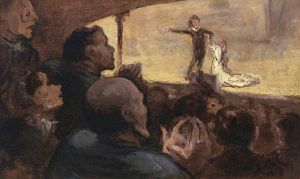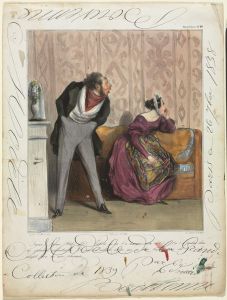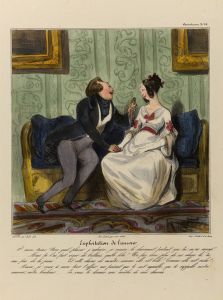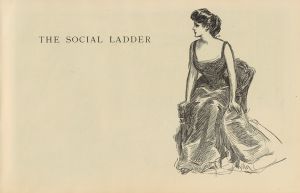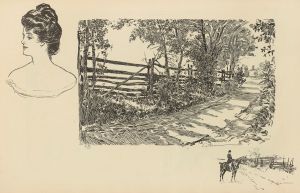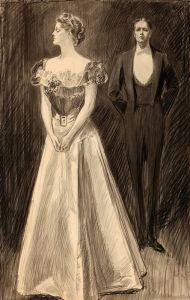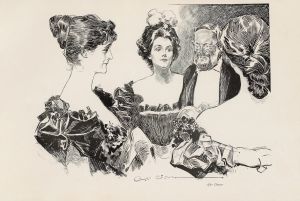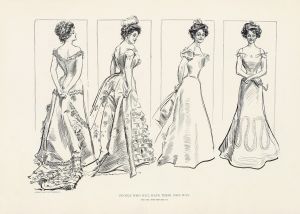
The social ladder.
A hand-painted replica of Charles Dana Gibson’s masterpiece The social ladder., meticulously crafted by professional artists to capture the true essence of the original. Each piece is created with museum-quality canvas and rare mineral pigments, carefully painted by experienced artists with delicate brushstrokes and rich, layered colors to perfectly recreate the texture of the original artwork. Unlike machine-printed reproductions, this hand-painted version brings the painting to life, infused with the artist’s emotions and skill in every stroke. Whether for personal collection or home decoration, it instantly elevates the artistic atmosphere of any space.
Charles Dana Gibson was an influential American illustrator, best known for his creation of the "Gibson Girl," a representation of the idealized American woman at the turn of the 20th century. One of his notable works is "The Social Ladder," which exemplifies his keen observation of social dynamics and his ability to capture the nuances of societal interactions through his art.
"The Social Ladder" is a black-and-white illustration that reflects Gibson's characteristic style, combining detailed line work with a satirical edge. The artwork portrays a scene that is both a commentary on and a reflection of the social stratification and aspirations prevalent during the Gilded Age in America. This period, spanning from the 1870s to about 1900, was marked by rapid economic growth, industrialization, and a stark divide between the wealthy elite and the working class.
In "The Social Ladder," Gibson illustrates a group of people ascending a metaphorical ladder, each rung representing a different social class or status. The individuals depicted are dressed in the fashion of the time, with the upper rungs occupied by those in more elaborate and expensive attire, symbolizing their higher social standing. The lower rungs feature individuals in simpler clothing, indicative of their lower status. This visual metaphor effectively critiques the rigid social hierarchy and the often superficial nature of social mobility.
Gibson's work often highlighted the roles and expectations of women in society, and "The Social Ladder" is no exception. The presence of women in the illustration, particularly those striving to climb higher on the ladder, underscores the limited avenues available to women for advancing their social status during this era. Through marriage, social connections, and adherence to societal norms, women navigated a complex social landscape, a theme Gibson frequently explored in his illustrations.
The satirical nature of "The Social Ladder" is typical of Gibson's broader body of work, which often used humor and irony to comment on societal norms and behaviors. His illustrations were widely published in popular magazines of the time, such as Life and Harper's Weekly, reaching a broad audience and influencing public perceptions of social issues.
Gibson's ability to encapsulate the spirit of his time through art made him a significant cultural figure. His work not only entertained but also provoked thought and discussion about the social structures of his day. "The Social Ladder" remains a relevant piece for its historical insight into the social dynamics of the late 19th and early 20th centuries, as well as for its artistic merit.
Overall, Charles Dana Gibson's "The Social Ladder" is a poignant example of how art can reflect and critique societal values, offering a window into the complexities of social hierarchy and the aspirations of individuals within it.






